Securing a government contract is a game-changer for many businesses. These contracts not only provide long-term stability but also open doors to high-value projects with the potential to scale. However, the path to winning government contracts is highly competitive, requiring more than just meeting technical qualifications. Successful companies understand the importance of leveraging effective marketing strategies to position themselves as the ideal choice for government agencies.
For B2G (business-to-government) companies and private equity firms investing in this space, robust marketing is critical. In this post, we’ll explore the key marketing tactics that can help businesses win government contracts and stand out in a competitive field.
1. Understanding the Government Procurement Landscape
Navigating the government procurement process can be daunting. With complex regulations, long sales cycles, and fierce competition, companies need a clear strategy to break through the noise. Marketing plays a critical role in positioning your company as a reliable and credible partner that understands the unique needs of government agencies.
Effective marketing communicates your company’s value proposition in a way that resonates with procurement officers and government decision-makers. Whether you specialize in defense, cybersecurity, or professional services, crafting the right messaging and maintaining a strong digital presence helps your brand stand out in the crowded government marketplace.
For private equity firms investing in B2G companies, understanding how a portfolio company’s marketing strategy influences contract wins is vital. A clear, credible marketing strategy not only drives revenue growth but also increases the company’s overall value.
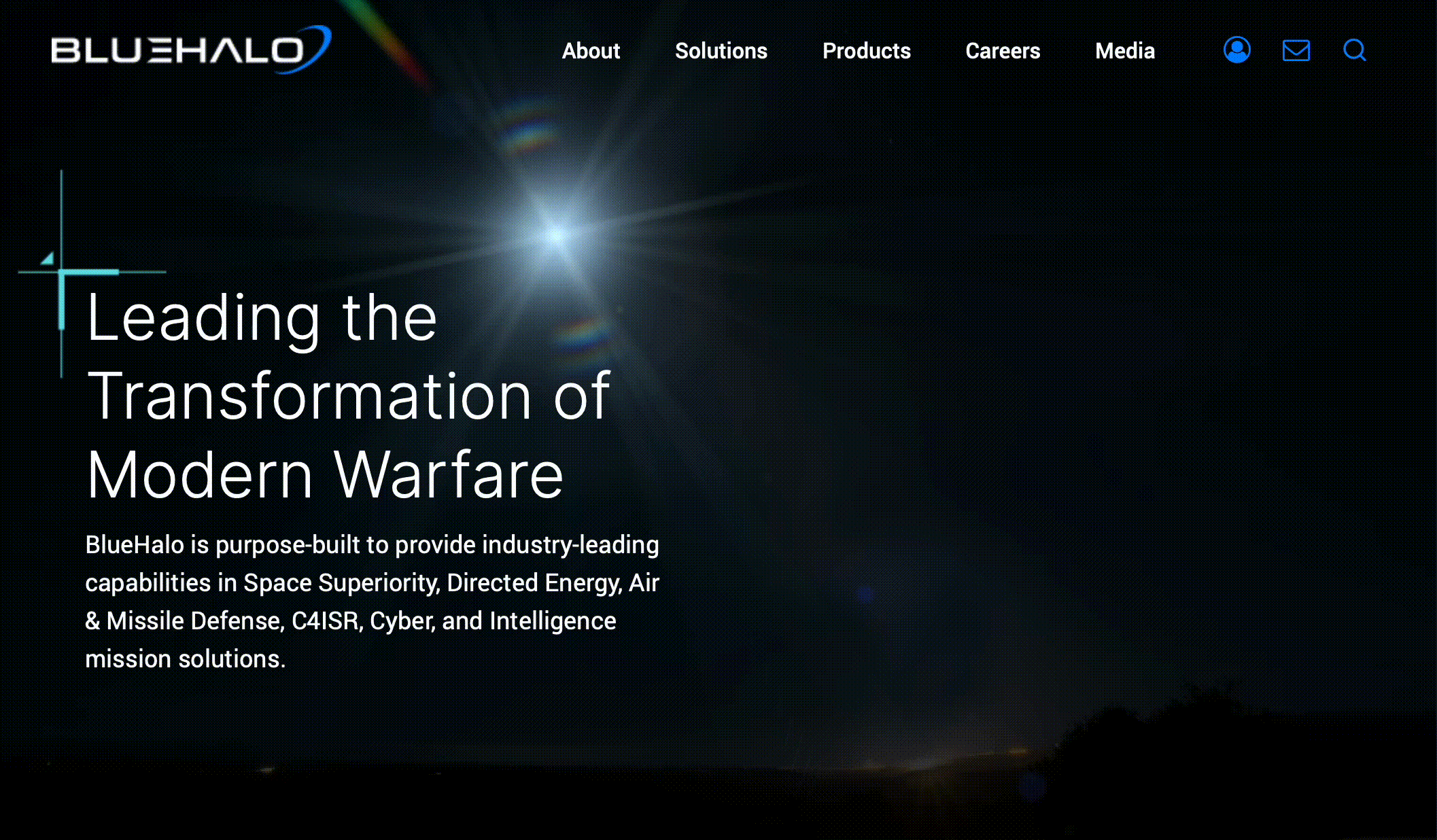
2. Targeted Outreach & Audience Segmentation
One of the most important aspects of marketing to the government is targeting the right audience. Government agencies have specific needs and decision-making processes, so it’s essential to tailor your outreach to the right individuals. This includes procurement officers, contracting officers, and agency decision-makers who hold influence over contract awards.
Using tools like audience segmentation and personalized marketing can help B2G companies identify and engage the most relevant government contacts. Tactics like email marketing, direct outreach, and even LinkedIn campaigns can help you get your message in front of the right eyes.
3. Building Credibility with Thought Leadership & Content Marketing
Credibility is crucial when marketing to the government. Procurement officers and agency leaders want to know they are choosing a contractor who understands their challenges and can deliver innovative solutions. Thought leadership and content marketing are powerful ways to establish this credibility.
B2G companies can create thought leadership content such as white papers, case studies, and webinars that demonstrate their expertise. By offering insights into industry trends, best practices, or innovative solutions, you position your company as a leader in your field. Content marketing also provides opportunities to nurture relationships with potential government clients over time.
Private equity firms benefit from investing in companies with a strong content marketing presence. These businesses are seen as industry leaders, which boosts their chances of winning contracts and increases their value in the marketplace.
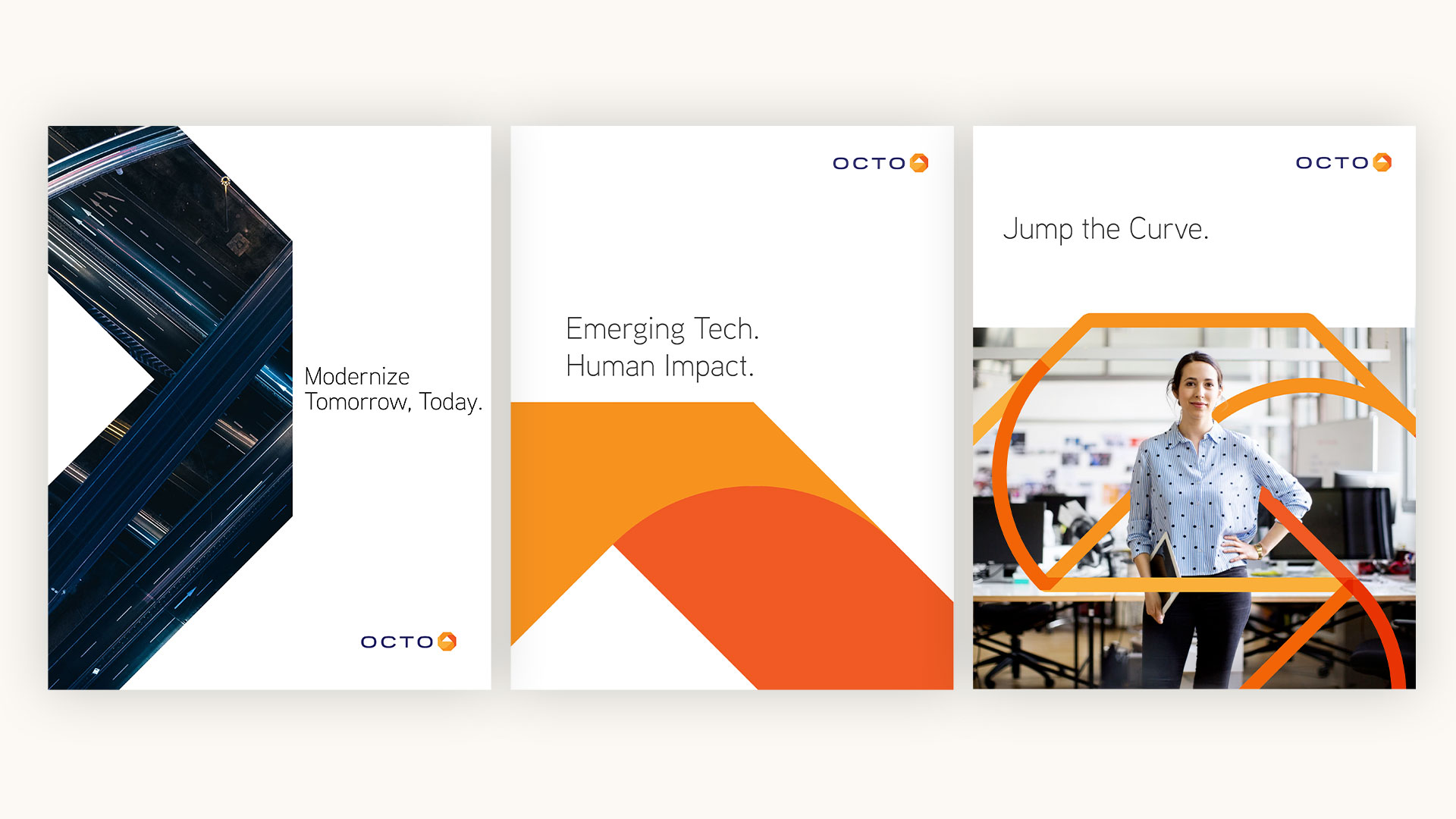
4. Leveraging Strategic Partnerships
Collaborating with other contractors or forming teaming agreements can significantly enhance your company’s competitiveness. Strategic partnerships allow you to combine strengths with other firms, making you a more attractive option for government agencies, especially for large or complex contracts.
By co-branding or collaborating on proposals, companies can present a united front that demonstrates a broader range of capabilities. Partnering with established government contractors can also add credibility, helping to reassure procurement officers that your business has the resources and expertise to handle the contract.
5. Optimizing Digital Presence for Government Audiences
A professional, well-optimized digital presence is essential when marketing to the government. Your website is often the first point of contact for procurement officers, so ensuring it is clear, easy to navigate, and up-to-date is critical. Having a strong digital footprint, from search engine optimization (SEO) to user-friendly web design, can improve your company’s visibility to government agencies.
Additionally, government decision-makers often perform thorough research before making a choice. Maintaining a consistent digital presence across platforms, including social media and industry-specific forums, helps build trust and credibility with your audience.
For private equity firms, investing in companies with optimized digital strategies ensures that these businesses are discoverable, credible, and positioned for success in government contracting.
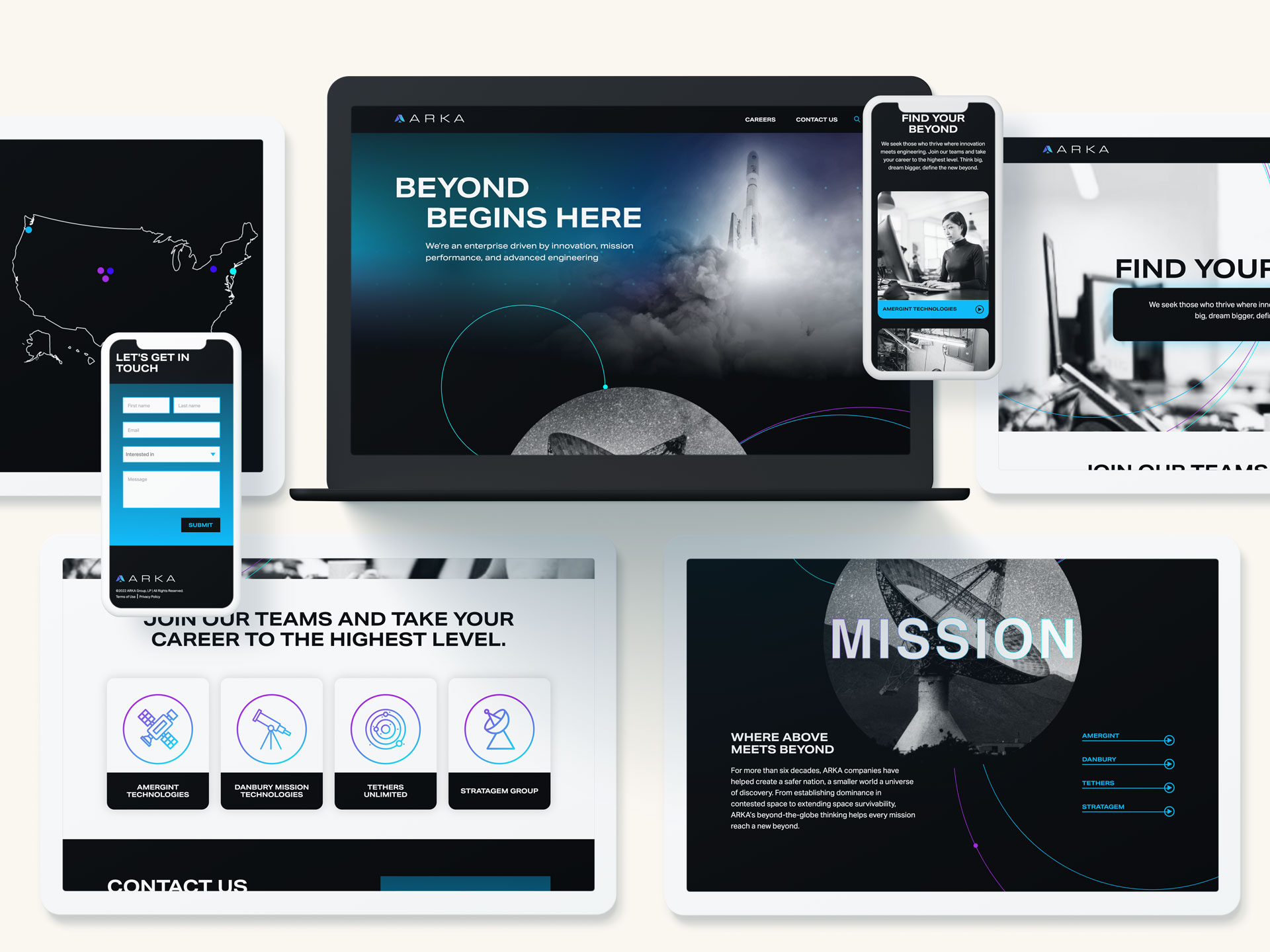
6. The Role of Networking & Relationship Building
Government contracting isn’t just about submitting proposals—it’s about building relationships. Networking is a key component in winning government contracts, whether through participating in trade shows, attending government forums, or engaging with government officials at industry events. Strong relationships build trust and make your business a familiar, reliable option when procurement officers are ready to make decisions.
B2G companies should invest time in developing relationships with key government contacts and staying visible at relevant events. These relationships can often be the deciding factor in whether your proposal is given serious consideration.
Unlocking the Power of Marketing in Government Contracting
In a competitive B2G market, marketing is essential for building credibility, creating connections, and ultimately winning government contracts. From targeted outreach to thought leadership and digital optimization, the strategies outlined here help position B2G companies for long-term success.
For private equity firms investing in the space, it’s clear that companies with a strong marketing strategy are not only better equipped to win government contracts but also provide a more attractive investment opportunity. At Bluetext, we specialize in helping B2G companies and their investors develop and execute these strategies.
In today’s competitive government contracting landscape, standing out is no small feat. While pricing and technical capabilities are critical to winning contracts, there’s another crucial factor that can make or break a contractor’s success: thought leadership. Establishing yourself as a trusted authority in your industry is essential, not just for differentiating your business but also for influencing the decision-makers in government agencies.
But what exactly is thought leadership, and how can it help government contractors build credibility and win contracts? Let’s explore.
The Importance of Thought Leadership in Government Contracting
Government contracting is highly competitive, with multiple firms often vying for the same contract. While many contractors may offer similar technical expertise or pricing, one element that can set them apart is their authority within the industry. Thought leadership provides that edge by positioning a company as a trusted advisor to government agencies and procurement officers.
In the public sector, trust and credibility are crucial factors in the decision-making process. Agencies are often risk-averse, preferring to work with companies they believe have a deep understanding of their unique challenges and long-term needs. Contractors that establish themselves as thought leaders demonstrate their commitment to the industry, forward-thinking approach, and ability to provide solutions tailored to government challenges.
This credibility is invaluable in the procurement process, helping to influence perceptions and potentially tipping the scales in your favor when contracts are being awarded.
The Benefits of Thought Leadership
Thought leadership offers several benefits for government contractors:
- Building Trust: By sharing valuable insights, analysis, and solutions, your company becomes a go-to resource for government decision-makers. This positions your firm as more than just a vendor—you’re seen as a strategic partner capable of delivering long-term value.
- Enhancing Visibility: Thought leaders naturally gain more attention, both online and offline. Consistently providing industry insights through articles, white papers, and speaking engagements raises your profile, making your company more recognizable to key stakeholders.
- Creating Opportunities: By engaging with the public sector through thought leadership, you open doors for networking, collaboration, and partnerships. Government contractors who are recognized as industry experts are often sought out for high-level conversations, giving them access to new opportunities.
How to Establish Thought Leadership in Government Contracting
Building a thought leadership strategy requires a concerted effort across various channels. Here are key strategies to consider:
1. Leverage Executive Visibility
Your executives are often the most credible voices within your company. Encourage them to share insights through blogs, white papers, and case studies that address common government contracting challenges. For example, a white paper on improving cybersecurity in public sector IT systems can help position your company as a forward-thinking solution provider in a key area of concern.
2. Engage in Speaking Opportunities
Participating in industry events and conferences is a powerful way to demonstrate expertise. By delivering talks or sitting on panels, your company leaders can showcase their deep industry knowledge, while making valuable connections with procurement officers and other stakeholders in the government space.
3. Media and Content Opportunities
Take advantage of media opportunities to expand your company’s reach. Podcasts, radio tours, and guest articles in respected industry publications can amplify your firm’s voice. Providing expert commentary on emerging trends or challenges, such as the impact of AI on government operations, is a smart way to remain top of mind with key audiences.
4. Create Content That Solves Problems
Government agencies are constantly dealing with complex, evolving issues. Create content that directly addresses these pain points, offering actionable solutions and insights. A case study on how your company helped an agency streamline its procurement process can demonstrate your practical knowledge and ability to deliver results.
Measuring the ROI of Thought Leadership
Like any marketing initiative, thought leadership should be measurable. Key performance indicators (KPIs) might include:
- Engagement metrics: Track the performance of your thought leadership content by monitoring web traffic, social shares, and media mentions.
- Media coverage: A well-placed article or interview can enhance visibility and credibility.
- Business outcomes: Keep an eye on contract inquiries and wins that are linked to your thought leadership activities, as this can indicate direct impact on your bottom line.
By regularly reviewing these metrics, you can adjust your thought leadership strategy to focus on the areas delivering the most value.

Why Thought Leadership Matters for Government Contractors
Thought leadership is more than just a marketing buzzword. For government contractors, it’s a powerful tool for building trust, enhancing visibility, and ultimately winning more contracts. By positioning your company as an authority in your field, you not only differentiate yourself from the competition but also create long-term value for your public sector clients.
Ready to establish your firm as a leader in government contracting? Bluetext can help you develop a customized thought leadership strategy that drives results. Contact us today to get started.
The era of space travel being the exclusive domain of astronauts and government agencies is over. With the advent of commercial space travel, a new frontier has opened, not just for exploration but also for marketing and branding. As companies like SpaceX, Blue Origin, and Virgin Galactic make space travel more accessible to the public, brands have a unique opportunity to capitalize on this emerging industry. However, with these opportunities come new challenges that require innovative strategies and forward-thinking approaches.
The Dawn of Commercial Space Travel
The commercialization of space travel has shifted from science fiction to reality. Private companies are now regularly launching satellites, conducting space tourism, and planning missions to the Moon and Mars. This shift is creating a new marketplace—one that is not bound by the limits of Earth.
For brands, this means there’s a new, almost limitless, platform for visibility. The allure of space travel captures the imagination of people around the world, making it a powerful tool for storytelling, brand positioning, and customer engagement.

Marketing Opportunities in the Space Age
- Space as a Branding Platform: Imagine your brand logo floating in zero gravity or being displayed on the surface of the Moon. While it may sound far-fetched, these ideas are becoming increasingly feasible. Brands can now consider space as a literal platform for their messaging. For instance, SpaceX has already sent a Tesla Roadster into space as a marketing stunt, capturing global attention. The possibilities for creating iconic, out-of-this-world brand experiences are endless.
- Sponsorships and Partnerships: As commercial space missions become more frequent, brands have the opportunity to sponsor missions, spaceflights, or even entire space stations. These partnerships can provide unparalleled visibility and align a brand with the pioneering spirit of space exploration. Brands that are early adopters of these sponsorship opportunities can position themselves as leaders in innovation and technology.
- Content Creation and Storytelling: The narrative of space travel is rich with themes of exploration, discovery, and the future. Brands can tap into these themes to create compelling content that resonates with their audience. Whether it’s documenting a space mission, creating VR experiences that simulate space travel, or developing educational content about the cosmos, the storytelling potential is immense. This content can help brands connect with audiences on a deeper emotional level, fostering brand loyalty and engagement.
- Marketing to a New Demographic: As space tourism becomes more accessible, a new demographic of affluent, adventurous individuals is emerging. These space tourists represent a niche but lucrative market for luxury brands, travel companies, and experience-based services. Marketing strategies that cater to this audience’s desire for unique, exclusive experiences can be highly effective.

Challenges in the New Space Economy
While the opportunities are exciting, marketing in the realm of space travel also presents significant challenges. Brands need to navigate these carefully to ensure successful campaigns.
- Regulatory and Ethical Considerations: Space is a shared resource, and the regulatory environment governing space activities is still evolving. Brands need to be mindful of the ethical implications of their marketing strategies in space. This includes avoiding space debris, respecting international space laws, and considering the environmental impact of space activities. Missteps in this area could lead to public backlash and damage to brand reputation.
- High Costs and Risk Factors: Entering the space economy requires significant investment. Whether it’s sponsoring a space mission or creating space-themed content, the costs can be astronomical. Additionally, space travel involves inherent risks. Brands need to weigh these risks carefully and develop contingency plans to mitigate potential negative outcomes, such as mission failures or accidents.
- Audience Reception and Perception: While space travel is fascinating to many, it can also be seen as an elitist pursuit, accessible only to the wealthy. Brands need to be cautious about how their space-related marketing efforts are perceived by the broader public. Messaging should be inclusive and emphasize the benefits of space exploration for all of humanity, rather than just a privileged few.
- Technological and Logistical Challenges: Marketing in space requires overcoming significant technological and logistical hurdles. Whether it’s broadcasting live from space, designing durable materials that can withstand harsh space conditions, or coordinating with space agencies, the challenges are complex. Brands need to partner with experts in the space industry to ensure the feasibility and success of their campaigns.

The Future of Marketing in Space
As space travel becomes more mainstream, the impact on marketing and branding will only grow. In the near future, we may see space-based advertising, cosmic product placements, and even the first brands established in space. For companies willing to invest in this new frontier, the rewards could be immense.
However, the key to success will be innovation, creativity, and a deep understanding of both the opportunities and challenges that come with marketing in space. Brands that can navigate this uncharted territory effectively will not only capture the imaginations of consumers but also position themselves as pioneers in a truly new era of marketing.
At Bluetext, we’re excited about the possibilities that space travel presents for brands. Our team is committed to helping you explore this final frontier of marketing, developing strategies that align with your brand’s goals and resonate with your audience. Contact us today to learn how we can help your brand reach for the stars—literally.
In today’s fast-paced digital landscape, Business-to-Government (B2G) websites have become indispensable tools for companies aiming to secure government contracts. These platforms are not just gateways to lucrative opportunities but also serve as essential resources for navigating the complex world of government procurement. For businesses looking to establish or expand their presence in the government sector, understanding the role of B2G websites is critical to achieving success.
Introduction to B2G Websites
B2G websites are specialized online platforms that connect businesses with government agencies, streamlining the process of securing contracts for goods and services. Unlike traditional Business-to-Business (B2B) platforms, B2G websites are designed to meet the specific needs of government procurement, with features tailored to ensure compliance, transparency, and efficiency. These platforms are pivotal in facilitating interactions between private companies and government entities, making them essential for businesses eager to engage in government contracting.
Streamlining the Procurement Process
One of the most significant advantages of B2G websites is their ability to simplify the procurement process for both government agencies and contractors. Through these platforms, government entities can post requests for proposals (RFPs), manage bidding processes, and oversee contract awards—all in a streamlined, automated environment. This not only reduces the administrative burden on agencies but also accelerates the timeline for contract awards, allowing businesses to respond quickly to opportunities.
Digital tools embedded within websites, such as automated bidding systems and compliance checks, further enhance the efficiency of the procurement process. Contractors can submit bids, track their progress, and receive notifications about upcoming opportunities, all within a single platform. This level of automation ensures that the procurement process is not only faster but also more accessible to a broader range of businesses, including small and medium-sized enterprises (SMBs).
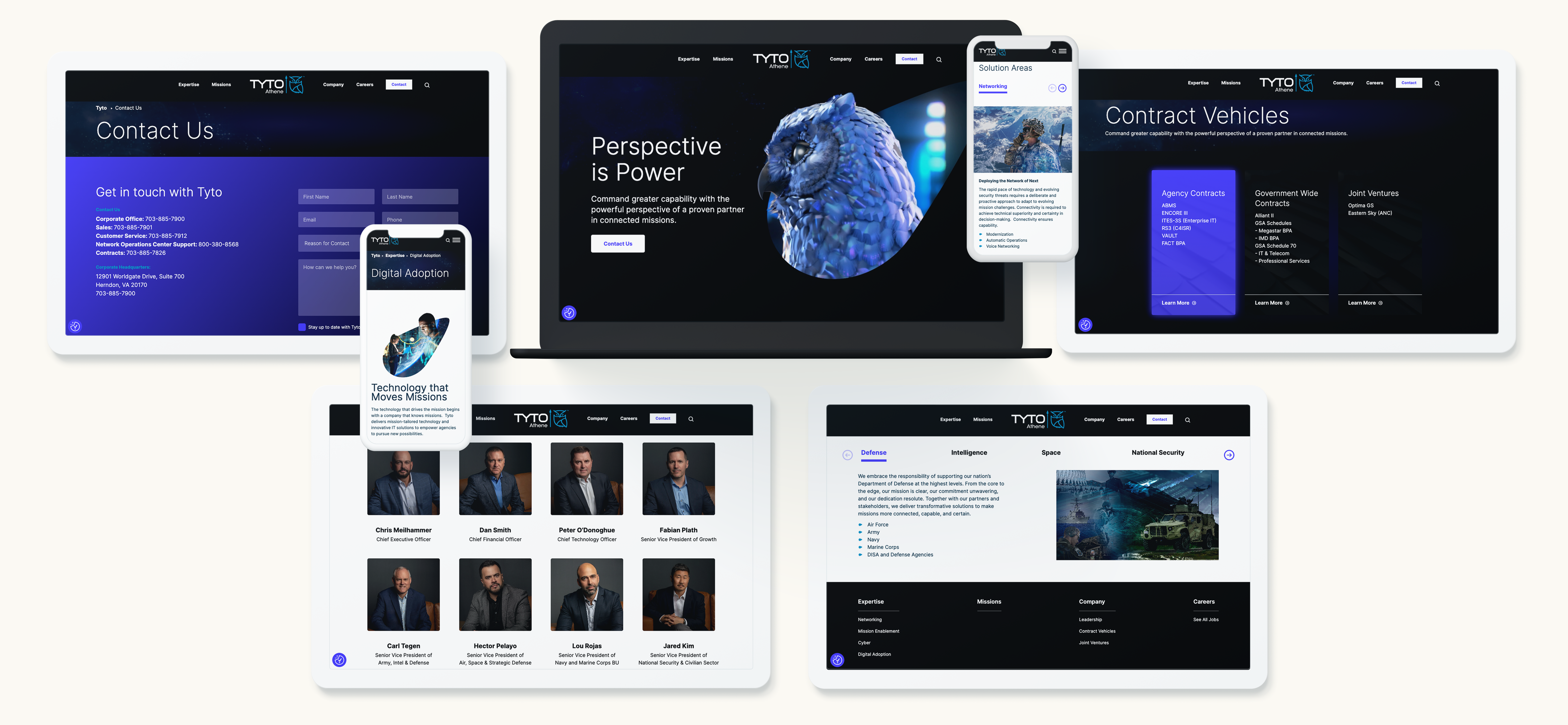
Enhancing Transparency and Compliance
Transparency is a cornerstone of government procurement, and websites play a crucial role in maintaining this principle. These platforms provide a clear, accessible view of procurement activities, allowing all stakeholders to monitor the process and ensure fair competition. By offering detailed information about contract opportunities, evaluation criteria, and award decisions, websites help eliminate ambiguity and foster trust between government agencies and contractors.
Compliance with government regulations is another critical aspect of the procurement process. B2G websites are designed to help businesses adhere to the stringent requirements set by government agencies, from financial disclosures to ethical standards. By integrating compliance checks into the procurement workflow, these platforms minimize the risk of non-compliance, reducing the likelihood of disputes or delays in contract execution.
Driving Engagement and Accessibility
B2G websites have also democratized access to government contracts, making it easier for SMBs to enter the government contracting space. Traditionally, large corporations dominated this arena due to their resources and established relationships. However, B2G platforms level the playing field by providing SMBs with the tools and information they need to compete effectively.
Through case studies and success stories, it’s evident that SMBs are increasingly leveraging B2G websites to secure government contracts. These platforms offer resources such as guidance on proposal writing, templates for compliance documentation, and even mentorship programs to help SMBs navigate the complexities of government procurement. As a result, more diverse businesses are now able to participate in government projects, driving innovation and competition in the market.
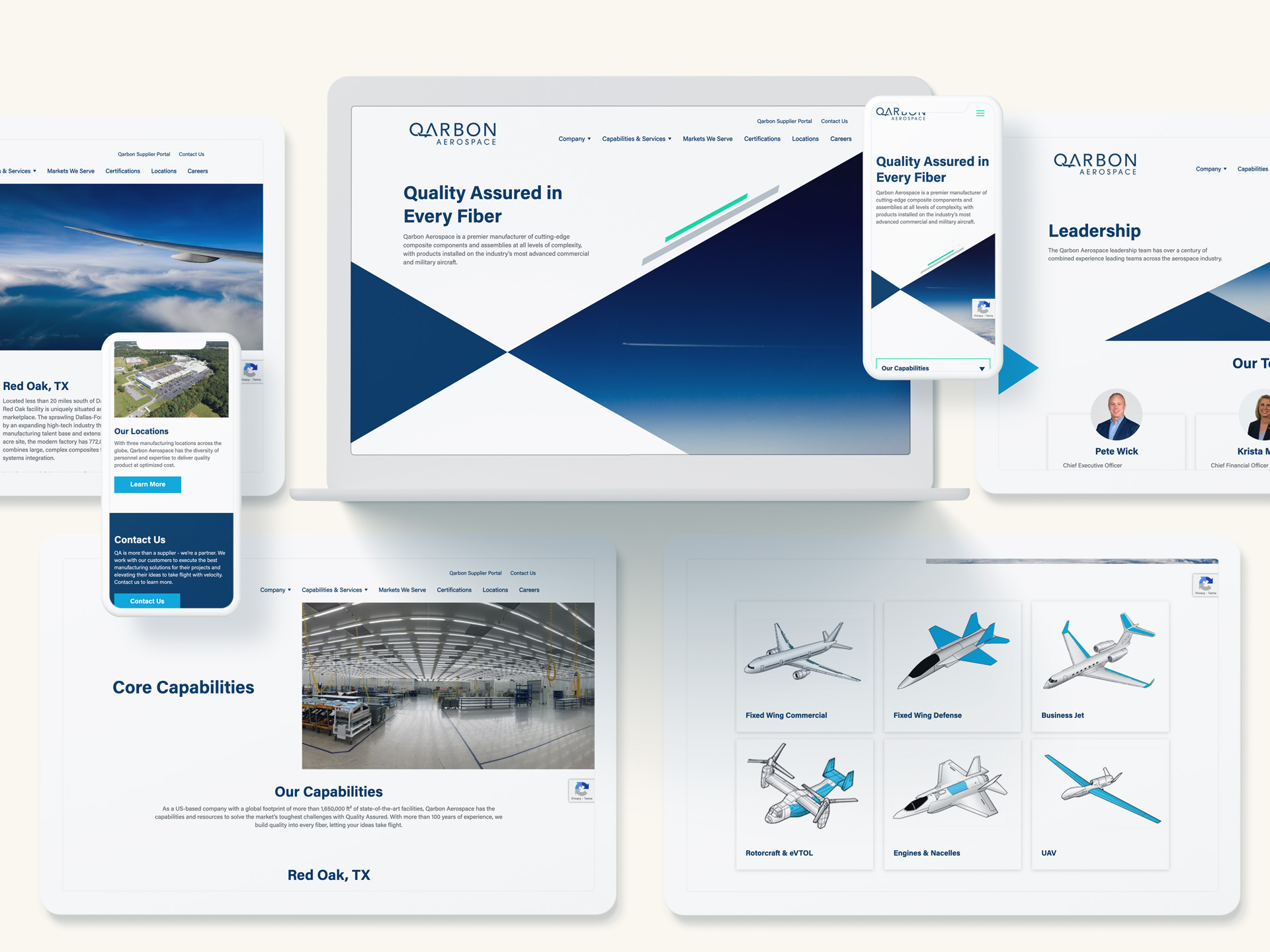
Best Practices for Leveraging B2G Websites
To maximize the potential of its website, businesses should adopt a strategic approach. Here are some best practices to consider:
- Optimize Your Online Profile: Ensure that your company’s profile on B2G platforms is complete, up-to-date, and highlights your strengths and past successes. A well-crafted profile can make your business stand out to government agencies.
- Respond Promptly to Opportunities: Government contracting opportunities can be time-sensitive. Make it a priority to monitor B2G websites regularly and respond to RFPs and other opportunities as soon as they are posted.
- Stay Informed: B2G websites frequently update their platforms with new features, compliance requirements, and procurement opportunities. Staying informed about these updates can give your business a competitive edge.
- Engage with the Community: Participate in forums, webinars, and training sessions. These resources can provide valuable insights into the procurement process and help you build relationships within the government contracting community.
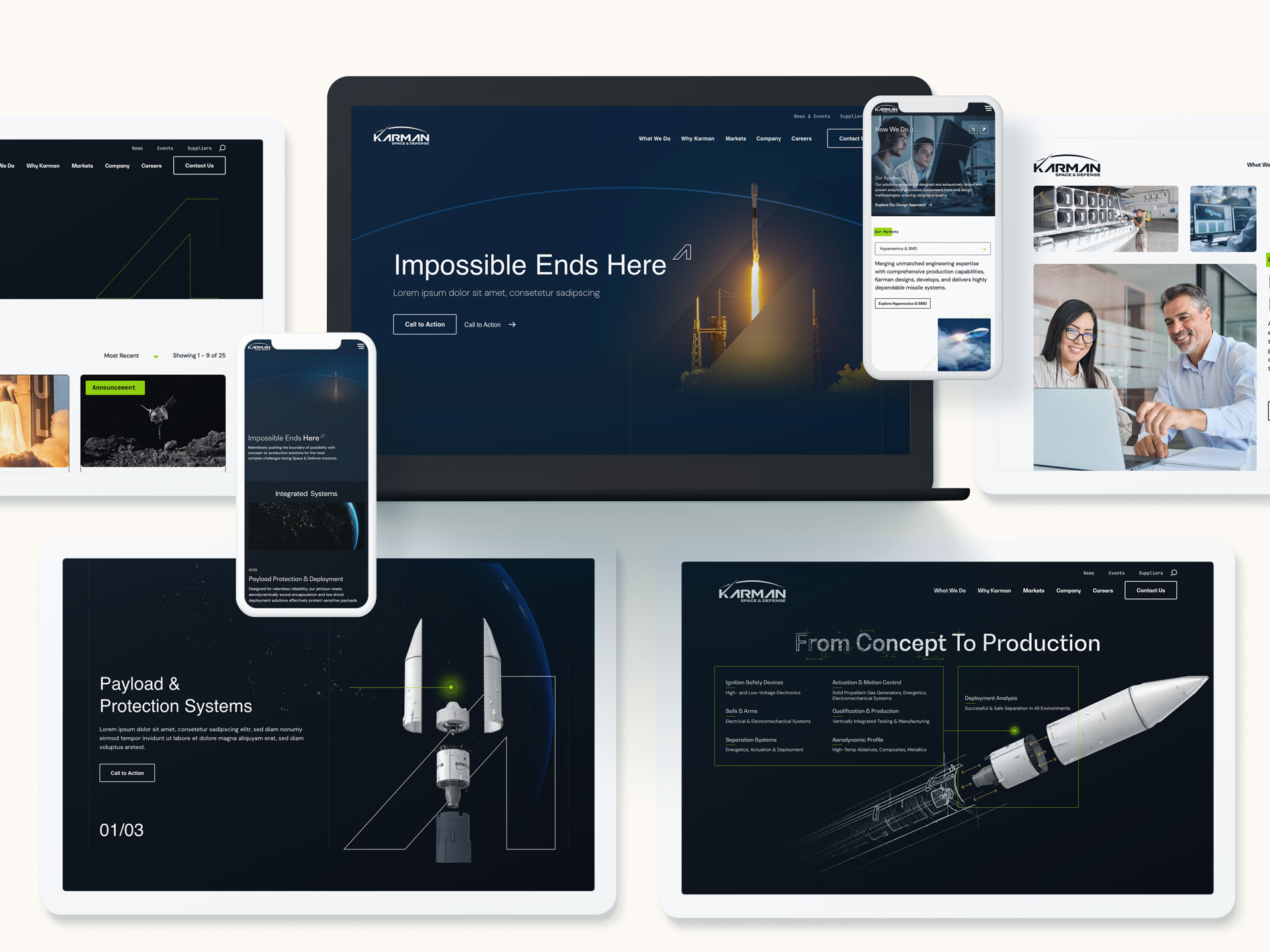
Websites are more than just portals to government contracts; they are powerful tools that can drive success in the government sector. By streamlining the procurement process, enhancing transparency, and increasing accessibility, these platforms offer businesses of all sizes the opportunity to secure government partnerships. For companies looking to expand their reach and engage in government contracts, leveraging the full potential of B2G websites is a path worth pursuing.
At Bluetext, we understand the complexities of government procurement and the importance of a strategic approach to B2G marketing. By harnessing the capabilities of B2G websites, businesses can not only navigate the path to procurement more effectively but also position themselves as trusted partners to government agencies. Let us help you chart your course to success in the government sector. Contact us today.
In today’s digital age, social media has become a powerful tool for communication, networking, and information sharing. While often associated with personal use or consumer brands, its impact stretches far beyond, influencing even the realm of government contracting. Government agencies and contractors alike are leveraging social media platforms to enhance their operations, engage with stakeholders, and stay competitive. In this blog post, we’ll explore the critical role social media plays in government contracting and offer practical tips on how to maximize its benefits.
The Power of Social Media in Government Contracting
Social media platforms like LinkedIn, Twitter, and Facebook are not just for social interactions. They serve as vital channels for information dissemination, public relations, and professional networking in the government contracting space. Here’s how social media is reshaping this sector:
1. Enhanced Communication and Engagement
Government agencies are increasingly using social media to communicate with the public and industry stakeholders. These platforms allow for real-time updates on policies, regulations, and contracting opportunities. Contractors can follow government accounts to stay informed about new contracts, changes in procurement processes, and other relevant news.
2. Building Relationships and Networking
Social media provides a unique opportunity for contractors to build relationships with key decision-makers, influencers, and other industry players. LinkedIn, in particular, is a powerful tool for professional networking. Contractors can connect with procurement officers, attend virtual events, and participate in industry discussions to expand their network and visibility.
3. Market Intelligence and Research
Social media is a treasure trove of information that can be used for market research and intelligence. Contractors can monitor conversations, trends, and feedback related to their industry. This information can be invaluable for understanding market needs, competitor activities, and emerging opportunities.
4. Reputation Management and Branding
In the government contracting arena, a strong and positive reputation is crucial. Social media allows contractors to showcase their expertise, share success stories, and engage with their audience. By maintaining an active and professional social media presence, contractors can build trust and credibility with potential clients and partners.
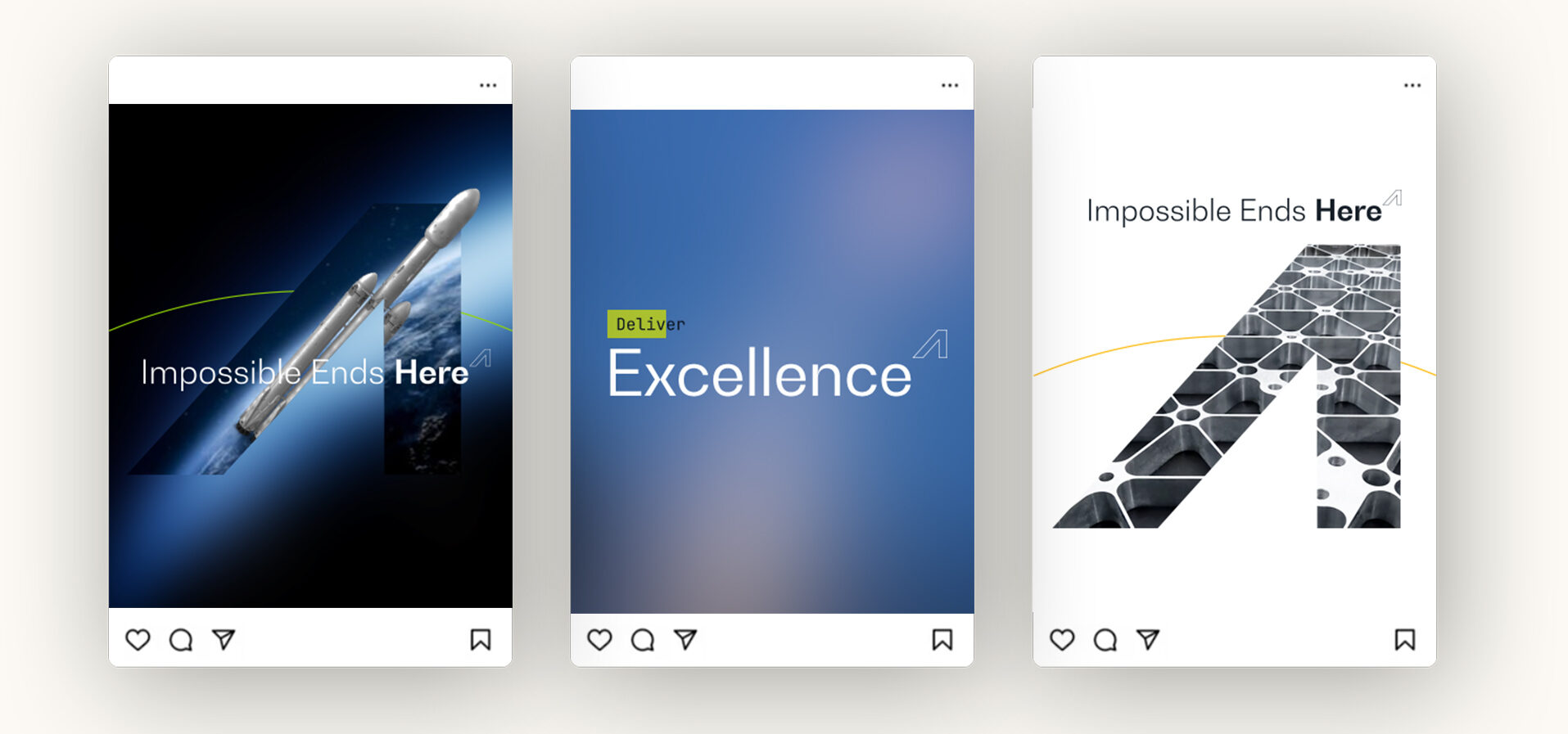
Tips for Leveraging Social Media in Government Contracting
To effectively utilize social media in government contracting, it’s essential to approach it strategically. Here are some tips to help contractors maximize their social media presence:
- Choose the Right Platforms: Focus on platforms that are most relevant to the government contracting industry, such as LinkedIn for professional networking and Twitter for real-time updates.
- Engage Regularly: Consistency is key. Regularly post updates, share industry news, and engage with your audience to maintain visibility and relevance.
- Follow Government Accounts: Keep up with government agencies and procurement offices on social media to stay informed about contracting opportunities and industry news.
- Share Valuable Content: Provide content that adds value to your audience, such as insights on industry trends, success stories, and expert opinions. This positions your company as a thought leader.
- Monitor and Respond: Pay attention to mentions, comments, and messages. Respond promptly and professionally to engage with your audience and manage your online reputation.
- Use Analytics: Utilize social media analytics tools to track your performance, understand your audience, and refine your strategy.
- Leverage Visuals: Use images, infographics, and videos to make your content more engaging and shareable.
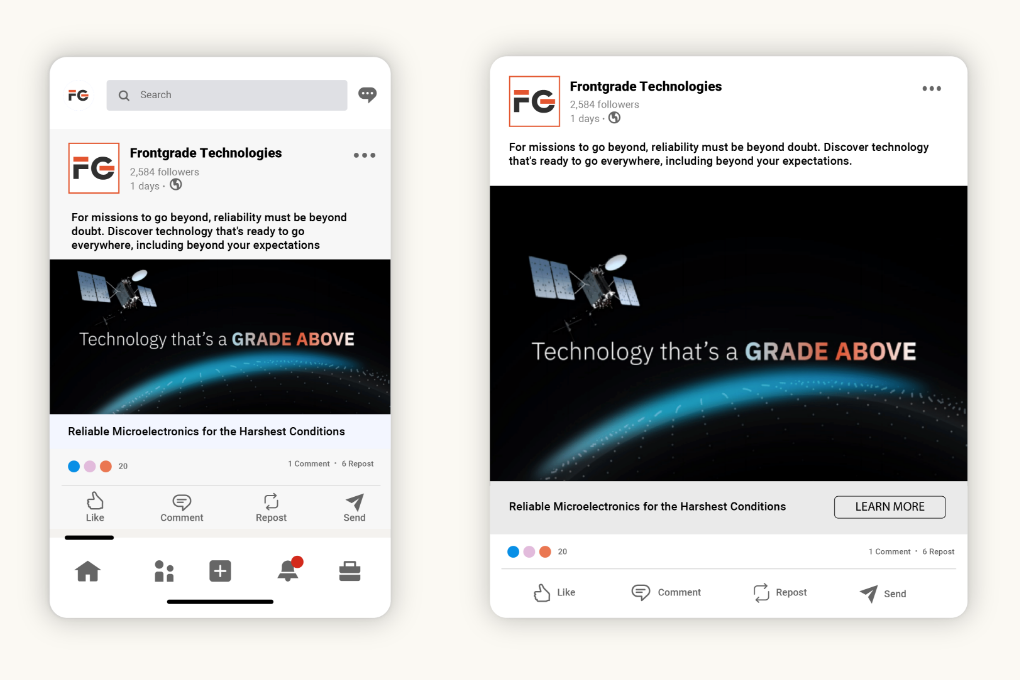
The role of social media in government contracting cannot be overstated. From enhancing communication and engagement to providing valuable market intelligence and aiding in reputation management, social media is a crucial tool for success in this competitive field. By strategically leveraging social media platforms, government contractors can stay informed, build strong relationships, and effectively showcase their expertise. At Bluetext, we understand the power of social media and are here to help you navigate and maximize its potential in the government contracting space. Contact us today to learn more about how we can assist you in developing a winning social media strategy.
In the dynamic world of government contracting, the key to success lies in understanding and effectively targeting the Ideal Government Persona (IGP). At Bluetext, we recognize that this approach not only optimizes marketing efforts but also maximizes the potential for winning contracts. Here’s how you can refine your strategy to connect with the right government audience.
Understanding the Ideal Government Persona (IGP)
The Ideal Government Persona (IGP) represents a composite profile of your target decision-makers within government agencies. These personas are crafted based on extensive research, including demographic data, job responsibilities, challenges, goals, and preferences. By honing in on the IGP, your marketing efforts can become more precise and impactful.
Steps to Identifying Your IGP
1. Research and Data Collection
Begin with thorough research. Utilize available data sources such as agency reports, market research, and industry analysis. Key information includes:
- Agency size and structure
- Roles and responsibilities of decision-makers
- Budget cycles and procurement processes
- Current pain points and needs
2. Segment Your Audience
Government agencies vary widely, from federal to state and local levels, each with distinct characteristics. Segment your audience based on criteria such as agency type, size, location, and specific operational needs.
3. Create Detailed Personas
Develop detailed profiles for your IGPs. These should include:
- Demographics: Age, education, job title, and career background
- Goals: What they aim to achieve in their roles
- Challenges: Key issues and pain points they face
- Influence: How they influence purchasing decisions and the buying cycle
- Communication Preferences: Preferred channels and content types (e.g., white papers, webinars, social media)
4. Map the Buyer’s Journey
Understand the journey your IGP takes from awareness to decision-making. Map out the stages and identify the touch points where you can engage effectively. This helps in creating targeted content and campaigns that align with their needs at each stage.
Crafting Your Messaging
1. Address Their Pain Points
Tailor your messaging to address the specific challenges and pain points of your IGP. Highlight how your solutions can alleviate these issues and contribute to the agency’s success.
2. Showcase Value and ROI
Government decision-makers are often driven by budget constraints and accountability. Clearly articulate the value and return on investment (ROI) your solutions offer. Use case studies, testimonials, and success stories to build credibility.
3. Use Government-Friendly Language
Speak the language of your audience. Use terminology and references familiar to government officials. This not only establishes rapport but also demonstrates your understanding of their environment.
4. Leverage Thought Leadership
Position your brand as an industry thought leader. Share insights through blogs, white papers, webinars, and speaking engagements. Providing valuable, relevant content builds trust and positions your company as a go-to resource.
Optimizing Your Channels
1. Government-Specific Platforms
Utilize platforms frequented by government officials, such as GovLoop, GSA’s eBuy, and FedBizOpps. Participate in industry conferences and government procurement events to increase visibility.
2. Social Media Engagement
Engage on social media platforms like LinkedIn and Twitter, where many government professionals are active. Share informative content and participate in relevant discussions to expand your reach.
3. Email Campaigns
Develop targeted email campaigns with personalized content tailored to your IGPs. Ensure your emails provide valuable insights and solutions, not just promotional material.
4. Search Engine Optimization (SEO)
Optimize your online content for search engines to ensure your materials are easily discoverable by government officials searching for solutions. Use relevant keywords and phrases that align with their search behavior.
Measuring Success
Track the effectiveness of your IGP-targeted campaigns using metrics such as engagement rates, lead generation, and conversion rates. Regularly review and adjust your strategies based on data insights to continually improve your targeting and outreach efforts.
Conclusion
Targeting the Ideal Government Persona is a strategic approach that can significantly enhance your success in the government contracting arena. By understanding and engaging with your IGP, you can create more meaningful connections, provide relevant solutions, and ultimately win more contracts. At Bluetext, we’re here to help you navigate this complex landscape and achieve your government contracting goals. Contact us today to learn more about our tailored marketing solutions for government contractors.
Non-alcoholic cocktails seem to be having a moment here inside the Beltway. You know what else is having a moment – The B2G Chief Growth Officer (CGO).
Earlier this year, LinkedIn released its annual “Jobs on the Rise” list of the 25 fastest-growing roles in the U.S. Guess what was number one on the list (hint – it’s not TikTok influencer): Chief Growth Officer. Specific to public sector-focused enterprises, Washington Technology summarized a number of CGO appointments across a broad range of government contractors and Federal IT providers, including Aptive Resources, cBEYONData, Electrosoft, RavenTek and Navistar Defense.
And this week, another one, as WashingtonExec reported that Tria Federal, a mid-market IT and advisory services provider to civilian and defense agencies, added Fabian Plath its new CGO. The editorial site also announced its 2024 Chief Growth Officer Award finalists as a testament to the emerging attention the role is receiving in the C-suite.
Notable but not surprising in the writeups of each CGO move is subtle variations in what each hire would be prioritizing. From aligning business units and leaders and driving expansion into new geographic and domain markets, to breaking down siloes, accelerating the transformation of vision into strategy, and strategic capture. This is both the challenge and opportunity facing CGOs who are uniquely positioned to drive enterprise-wide growth strategy and have an oversized impact on the future of the business.
CMOs often migrate to a CGO role. Marketing leaders draw on the impact of marketing strategy on growth to gain a better understanding of how core business units – independently and holistically – do the same. As is often the case, the success a CGO will have in extending the growth mission requires breaking down systemic barriers across functional silos, and gaining CXO buy-in. A CMO Council and Deloitte study found half of CMOs successfully assuming a CGO role indicate full alignment with internal champions, notably the CEO.
Digital marketing, branding and public relations are core to government contractor and federal IT provider growth strategies. For this blog post, I’ll focus on PR strategies for new and legacy CGOs to consider when seeking to ensure marketing investments and initiatives support growth.
The CGO mission
Why a CGO? Aren’t all CXOs and business unit leaders operating with a growth mindset? Sure, but, spoiler alert, not all companies are growing. One in four companies doesn’t grow at all, and only 10% of S&P 500 companies have reported revenue growth above GDP for more than 30 consecutive years.
Revenue Operations Alliance has a useful CGO overview, which stresses the need for an executive laser focused on looking past the day-to-day, with an eye towards sustaining and scaling growth in a meaningful way. This can include longer-term objectives to penetrate new verticals, regions and markets – all ambitious initiatives that may require a dedicated CGO.
CGOs can bridge the CEO & CMO divide 
As referenced, CMOs often migrate to a CGO role, which is why Bluetext often engages directly with CGOs for B2G and B2B firms that seek a brand revitalization, or firms that feel there is an external perception that needs to be adjusted through public relations.
At the same time, while CGOs are often grounded with CMO capabilities, CEOs often lack significant marketing experience. McKinsey & Company estimated that only 10 percent of Fortune 250 CEOs have marketing experience, and only 4 percent have previously held a CMO-like role. This creates the risk that the C-suite may underestimate the impact of marketing-fueled growth.
PR to support the CGO mission
Punching above your brand weight is a phrase we hear often from B2G marketing clients and prospects. It is important to note that when we develop a PR program with this objective in mind, the goal is not to create an impression that the brand can deliver beyond its capabilities. It simply means that the brand is trailing the business.
B2G brands are increasingly looking to down-funnel media relations, social media and earned content programs. This isn’t to say that brand awareness isn’t a critical early step to drive future growth, but clients are looking for us to draw a straighter line.
A PR strategy to drive growth starts with raising enterprise value. Shining a spotlight on all the core assets and differentiators of the business – technologies, services, people, culture, leadership, market position – lifts enterprise value and, in turn, creates growth opportunities. Growth acceleration also demands a tightly integrated approach for earned, paid and owned. PR can’t operate in a vacuum; the greatest growth leaps we see are when each media component plays off one another.
- Awareness that is critical to getting on the radar of prospects
- Credibility to sell without skepticism on whether you can deliver
- Trust that comes with third party validation, not just saying you can do it
- Scalability to handle increasingly large projects and opportunities
- Attract investors, acquirers, partners and customers to accelerate and enable growth
- Delivery track record that is proven time and time again
So the aggregate acronym for these six PR pillars for growth is ACT SAD, which really doesn’t have anything to do with what we are talking about but I’d be remiss not to point it out. The bottom line is that marketing is just one piece of the growth mindset a CGO must adapt, alongside sales, product and development and other core departments.
If you are a CGO seeking to learn more about how Bluetext can support your growth objectives in public sector and commercial markets through branding, digital marketing and public relations, reach out to us.
Government efforts to engage PE and VC-backed startups puts federal marketing and messaging in the spotlight
Venture Capital-backed companies accounted for less than 1% of the $411 billion DoD contracts awarded last year. Analyzing that figure probably comes down to whether you are a glass half-empty or half-full kind of person. There are clear opportunities for startups to secure more contracts from DoD and US Public Sector, but there are also undeniable reasons why this number remains so low.
Perhaps that is why DoD and the VC and Private Equity communities are increasingly focused on making it easier for both sides to communicate effectively with one another. Entrenched government contractors know the language of Washington and what messages will resonate with stakeholders. They also know which processes and vehicles offer the best chances for success in securing contract wins.
Notable and encouraging is that the ecosystem of defense tech brands the DoD can tap is more diverse than ever before – with capabilities stretching across every conceivable market need and pain point. Bessemer Venture Partners charted this diversity in a defense tech startup map across five leading marketing opportunities: AI/ML, autonomous systems, cyber, advanced manufacturing, and communications/intelligence/edge
VC firms and their portfolio companies are still adapting to the language of Washington, but there are encouraging initiatives underway and proven strategies to help defense tech startups win more government business.
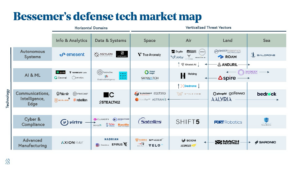
Cross-pollination from DoD to VC
National Security and DoD personnel hopping over to government contractor jobs is as predictable as Congress waiting until the 23rd hour to avoid government shutdowns. But late last year, The New York Times reported on the growing number of senior Pentagon officials leaving for positions at B2G-focused venture capital and private equity firms that invest in defense tech startups.
The article “identified at least two dozen venture capital, government contractor financing or private equity firms that are run by or have hired former Pentagon officials or retired military officers, with most of the hires having taken place in the last five years.” The author added that there are at least 50 people who have shifted from government roles to VC firms backing defense-oriented startups, including:
- Red Cell Partners: Mark Esper, former secretary of defense (2020)
- Scout Ventures: Ryan McCarthy, formerArmy secretary (2021)
- Shield Capital: Raj Shah, formermanaging partner, Defense Innovation Unit, Air Force F-16 pilot (2018)
- US Innovative Technology Fund: Ryan McCarthy,former secretary of the Army (2021)
- Lux Capital: Raymond Anthony Thomas III, retired general,S. Special Operations Command (2019)
- General Catalyst: Scott Howell, retiredAir Force lieutenant general, former Joint Special Operations Command (2021).
- AE Industrial Partners: James McConville,retired general, chief of staff of the U.S. Army (2023).
- Pallas Advisors/Pallas Ventures/Pallas Foundation:Richard Spencer, former secretary of the Navy (2019)
- Snowpoint Ventures: Doug Philippone, former Army Ranger (2008)
- J2 Ventures: Patricia D. Horoho,former Army surgeon general
- Insight Partners: Nick Sinai, former White House deputy chief technology officer (2014).
- Chertoff Group/MC2Security Fund: Michael Chertoff, former homeland security secretary (2009)
- Point72 Ventures: Daniel Gwak, formermember, In-Q-Tel
The National Security and DoD firepower now being put to work across B2G VC and B2G PE firms is immensely valuable for tapping more deeply into the government market. Some of the hottest defense tech brands can be found at these investment firms, including: Shield AI (A.I. pilot), HawkEye 360 (satellite data), Virtru (encrypted email), Rebellion Defense (mission management software), HawkEye 360 (satellites), Shift5 (data-driven equipment maintenance), BigBear.AI (intel and defense A.I.), Anduril (defense software/autonomous vehicles), Palantir (A.I. software), and Applied Intuition (autonomous vehicle software).
VC and PE firms educating acquisition community
And while these former officials are helping VCs and startups better speak the language of Washington, there are parallel efforts underway to educate government leaders and contracting officers on how to better identify and engage with startups. Earlier this year, Federal News Network wrote on a Potomac Officers Club Defense R&D Summit to bridge the communications gap. At the event, Melissa A. Johnson, U.S. Special Operations Command acquisition executive, acknowledged that “We definitely have a communication gap right now. We speak one language on the DoD side, the [Defense Industrial Base] pretty much understands it, but the startup culture — not so much. There’s a lot of just talking past each other.”
Johnson went on affirm that her focus is on closing that communications gap through investment in relationship building and assembling venture capitalists with the acquisition community so contracting officers can ask the right questions. These efforts complement tools that exist for defense tech startups to submit for and win DoD contracts, including Federal Acquisition Regulations (FAR) and Defense Federal Acquisition Regulation Supplements (DFAR) contracting, as well as Other Transaction Agreements (OTAs) that allow DoD to accelerate emerging technology adoption.
Defense tech startups also recognize resources such as Defense Innovation Unit (DIU), the only DoD organization focused on accelerating the adoption of commercial and dual-use technology to solve operational challenges at speed and scale.
Messaging to ‘Government’ doesn’t work
The DoD isn’t one customer; it’s hundreds. Messaging and targeting must reflect that. Unlike the commercial market where vendors and service providers can conceivable message to a “financial services firm” and replicate that across the industry, trying to create a message that will universally resonate across DoD is far more perilous. Branches, units and individuals are driven by specific objectives, and your ability to build branding, messaging and go-to-market campaigns aligned to that reality is critical.
My colleague and public sector messaging veteran Ray Holloman wrote on the importance and challenges of federal marketing and messaging in a blog post last year. He talked about how even the savviest, largest government contractors still get federal marketing wrong. Everyone is innovative, everybody is a great partner and everybody solves the most complex B2G challenges. The marketing too often speaks to what the contractor thinks the government wants to hear, and that also applies to defense tech startups that will feel even greater pressure to follow “check the concern box” messaging than spend time on what makes the startup uniquely capable. Ray reminds B2G brands to “market to stand out, not to fit in.”
That starts with speaking directly to an audience of one, or few, rather than attempting a bland, cookie-cutter message built for mass appeal.
Message nimble, not small
Punching above your brand weight is a phrase we hear often from B2G marketing clients and prospects. It is important to note that when we develop campaigns with this objective in mind, the goal is not to create an impression that the brand can deliver beyond its capabilities. It simply means that the brand is trailing the business.
That said, there are startup attributes to message that will resonate with DoD decision makers. Startups have more flexibility and less bureaucracy to innovate, and can more easily pivot around client needs. Startups must be highly efficient in developing products and services, which translates to potential cost savings and accelerated delivery to government clients. At the end of the day, DoD is less interested in the “smallness” of a vendor, but very interested in scalability and agility to support demand peaks and valleys.
Message to convey enterprise value
It is not an accident that, to date, 68 of Bluetext clients have been acquired in the 24 months following a Bluetext engagement – which is why firms targeting public sector/defense decision makers turn to Bluetext to deliver powerful creative, branding, websites, campaigns and digital experiences that raise enterprise value.
Whether the client goal is to get acquired, make acquisitions, go public or simply accelerate organic growth, shining a spotlight on all the core assets and differentiators of the business – technologies, services, people, culture, leadership, market position – lifts enterprise value and, in turn, creates growth opportunities. This message resonates with government decision makers who want to see strength across your enterprise, as well as current and prospective investors.
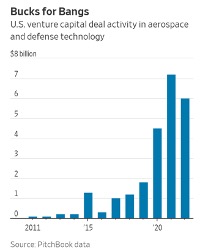
Growing startup contract share is not an overnight process. The Wall Street Journal highlighted some reasons that DoD dollars are not yet gushing to startups, including an ecosystem that was challenging for startups to crack, expected culture and bureaucracy hurdles, and the fact that adjusting buying habits around startups is a work in progress. But there are signs of a more positive outlook; VC investment in defense tech startups surpassed $30 billion a year for the past few years (5x investment levels in 2016), and the WSJ article estimates roughly 100 new defense-tech startups have been founded in the U.S. during that time period.
With more investment dollars flowing, marketing and messaging becomes critical to convert funding into DoD revenues. If you are a defense tech brand, B2G Venture Capital or B2G Private Equity firm interested in learning more about why Bluetext is the right partner to grow public sector opportunities and business, reach out to us at https://bluetext.com/contact-us/.
AUSA is just around the corner! AUSA’s Annual Meeting offers a unique opportunity to network with other defense contractors and military personnel, gain insights into the Army’s priorities heading into the following year, and stay updated on industry trends. Here is your guide to making the most of your AUSA experience:
-
Set Clear Goals:
Before attending the conference, define your objectives. Are you looking for new partnerships, seeking the latest information on military technology, or showing off the capabilities of your organization? Having clear goals will help you tailor your conference experience accordingly. Research the agenda and create a schedule that aligns with your goals. Identify key speakers, panels, and exhibitors you want to visit. The Exhibitor’s Hall can be overwhelming, so make sure you review the map before you go and plan which booths you would like to see and who you would like to speak with.
-
Network with Purpose:
Networking is one of the main reasons people attend conferences. Don’t just collect business cards; engage in meaningful conversations. Prepare an elevator pitch that clearly conveys your company’s capabilities and what you’re looking for. After the conference, don’t let the connections you’ve made go cold. Send follow-up emails or connect on LinkedIn to express interest in further collaborations or partnerships. Don’t forget to personalize your messages to remind the person of your conversation.
-
Get Tickets to a Social Event:
There are several events hosted by AUSA that are outside the conference agenda that you can purchase tickets to. These events are less formal ways to meet people in the industry and many of the events include food and live entertainment. You can purchase tickets on-site at the convention center the day of the event and AUSA members get a discount.
-
Leverage Your Company’s Social Media:
Ensure that you and your organization follow AUSA’s official social media accounts and use the hashtag #AUSA. Share your thoughts, engage with other attendees, and stay updated on any last-minute changes or additions to the program. If you are exhibiting, make sure your organization posts a picture of your booth and your booth number so other attendees know where to find you.
-
Download the AUSA App:
You can create a personalized schedule for your conference experience and view the convention center map when you download the AUSA app. There are a few networking features that have been added this year to help you expand your professional network.
-
Know the Area Around the Convention Center:
The Walter E. Washington Convention Center is located next to Mt. Vernon Square in DC. For a convenient coffee break or informal meeting, check out Compass Coffee or Unconventional Diner. For a quick lunch, check out Pearl’s Bagels, Shouk, or Wise Guys Pizza.
-
Start Planning For Next Year:
It is never too early to start thinking about next year! If you are thinking about having a booth at AUSA next year, ensure that your organization’s brand stands apart from your competition. Your booth is your battlefield, and a well-designed booth can attract and engage visitors effectively. While you are walking through the Exhibition Hall, take note of the booths that you like and which booths you do not like. The best trade show booths have a simple layout, are accessible to attendees, and probably entice visitors with swag. You may want to incorporate interactive elements like touchscreen displays or virtual reality experiences to engage attendees. These experiences can also be an effective start to a lead nurture campaign for your organization with the right post-event strategy and follow-up.
Attending AUSA can be a catalyst for growth for your company. By setting clear goals, networking effectively, and staying engaged in the industry, you’ll not only make the most out of the event but also position your business for long-term success in the defense and government contracting space.
According to Mordor Intelligence, The mergers and acquisitions (M&A) in aerospace and defense market size is estimated at USD 175.36 Billion in 2023 and is expected to reach USD 311.40 Billion by 2028. This remains one of the largest capital-intensive sectors as a result of the meticulous R&D needed to expand, enhance, and integrate product portfolios and stand out in the competitive landscape.
The aerospace and defense (A&D) sector is continuing to consolidate the supplier base to remove unnecessary costs and prolong its place in the market. One of the best examples of this is the 2019 United Technologies Corporation (UTC) and Raytheon Company (Raytheon) all-stock merger to consolidate their spot in the A&D sector. The successful merger achieved improved economies of scale, strengthened R&D, and provided a more diverse portfolio of products.
The Raytheon / UTC merger and its recent rebrand is a prime example of the importance of modernizing a company’s brand and digital identity. Since its founding in 1922, Raytheon has bared its name for over a century. With time, experience, and proven results comes recognition, so the switch to a new name may seem risky. But in order to stay competitive, be inclusive of broader capability sets, and look well-equipped to take on new modern challenges, the switch to the new name, RTX, was extremely intentional.
“RTX is a nod to the past and a nod to the future” – RTX’s CEO Greg Hayes.
Not only is the new three-letter name (and .com domain) simple, unique, and easy to remember, but it also is the same three letters as its stock ticker symbol, which is a combination of United Technologies previous symbol (UTX) and Raytheon’s (RTN), further exemplifying the union of the two companies and brand consistency across all channels. Another recent merger sporting the simplified 3-letter name and domain is the $2.1B combination of Vectrus and Vertex, now V2X.
A brand name change is a powerful move for a company, and there are several factors to consider when undergoing this transformation. Luckily the experts at Bluetext, one of the best DC brand strategy and government PR firms, can help. For more on naming, check our latest insights.
Private Equity has become a major spearhead in the A&D market and now accounts for 47% of transactions and 41% of deal value. Some major A&D mergers that went through recent successful rebrands propelled by PE firms include:
Centauri (now KBR)
When Arlington Capital Partners acquired three leading companies in the national security sector—Integrity Applications Incorporated, Xebec Global, and Dependable Global Solutions—the IAI team turned to Bluetext to develop and launch a new unified brand from scratch. In less than 6 months, the teams worked together to launch Centauri.
The name was inspired by the Centauri star system made up of some of the brightest stars in the sky. The logo represents the company; a group of brilliant minds composing a star system, brought together by the gravity of the mission to form this C shape as seen in the logo:

The new name and brand were crucial to showcasing the “stronger together” mentality of merging big players in the A&D sector. The rebrand was so effective that within just a year, KBR acquired Centauri, significantly expanding its military space, defense modernization, and cyber solutions portfolio. For more on this successful rebrand, check out Bluetext’s Hall of Fame featuring Centauri.
BlueHalo
Another Arlington Capital Partner acquisition consisting of AEgis Technologies, Applied Technology Associates, and Brilligent Solutions, looked to Bluetext to merge these powerhouse national-security teams together into one superior brand, BlueHalo.
The name BlueHalo represents the unbroken global line that ensures the technical advantage in the most advanced battlespace. The logo embodies the name by featuring a blue swoosh shape that depicts in a clean but strong manner, a halo of protection. It also supports the company’s brand line, “Leading the Transformation of Modern Warfare”

Since the 2020 rebrand, BlueHalo has rapidly strengthened its leadership positions in Space, Cyber, AI/ML, Counter-UAS (c-Unmanned Aerial Systems), and Autonomous Systems, with multiple acquisitions in record time. For more, read about Bluetext and BlueHalo’s partnership or watch the powerful brand essence video that Bluetext created.
Tria
When another private equity firm, Sagewind Capital, acquired Federal Advisory
Partners, Universal Consulting Services, and FavorTech Consulting, Bluetext helped merge these top-performing companies into one stronger, unified brand – Tria Federal.
The simple, punchy, and welcoming name, Tria, is the Greek word for three, representing the company’s commitment to 3 pillars of service:
- Service to Clients
- Service to Colleagues
- Service to Communities
The logo embodies these 3 pillars through approachable and patriotic brand application as a nod to its federal government audience as being the partner of choice in the path to possible. See more about Bluetext and Tria’s work together here.

Axient
Following a series of promising mergers and acquisitions from Private Equity firm Sagewind Capital, QuantiTech came to Bluetext for expertise and strategy to consolidate legacy companies into a new brand name and identity. Axient became the new corporate name to unite offerings & employees under one mission-driven, innovative narrative.
With a new name and logo design, the Axient brand identity was developed to visually encompass the value of the newly merged company. Sharp angles were intended to symbolize Axient’s cutting-edge expertise while the orbital curves showcase the full-spectrum lifecycle support offered to customers to “accelerate possible”. Watch the visual identity and mission come to life through the brand essence video and learn more about the work Bluetext and Axient completed together.
![]()
If you’re looking to revamp your company’s name and/or corporate image, connect with Bluetext, the top DC government contracting and aerospace marketing firm, to ensure you get the most out of your marketing efforts.